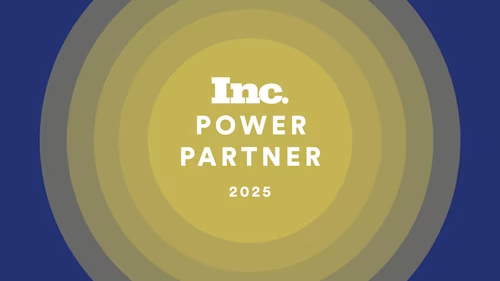
Making Secure and Effective Commitments in the Public Sector
Securely and efficiently signing agreements is essential for government agencies to fulfill their missions and serve constituents, as underscored by the ESIGN Act. The FedRAMP and GovRAMP authorized Docusign IAM platform helps agencies accelerate the use of e-signatures and overcome challenges associated with traditional ink signatures and manual agreement processes.

In the public sector, efficiently and securely signing agreements is paramount for meeting the mission and better serving constituents.
This is further underscored by the Electronic Signature in Global and National Commerce Act, also known as ESIGN Act, which establishes a framework for the legal validity of electronic signatures.
This act was introduced 25 years ago to solve the challenges agencies face with traditional “wet” signatures, including delays in capturing and validating signatures and tampering with the signed document.
Thankfully, Intelligent Agreement Management (IAM) streamlines and automates agreement processes, helping agencies accelerate the use of e-signatures.
As highlighted in the first blog post in this series, the AI-powered Docusign IAM platform helps agencies easily create the agreements that define their relationships with the public they serve. This blog post focuses on the “commit” stage of public sector agreements, which is the act of signing and bringing agreements to life.
Understanding the importance of signing agreements in the public sector
Agreements drive virtually every operational process and body of work—whether internal or external—in the public sector. These government agreements include contracts, memorandums of understanding (MOU), service agreements, tax forms, building permits, housing applications, grant applications, and more.
When signing an agreement, an employee or constituent confirms the information is accurate, approves a request, or even authenticates the form's source. A completed and signed agreement is legally binding evidence of the signer’s intention and is operationally vital for agencies.
However, the traditional signing process presents a wide range of challenges that continually need to be addressed, including the physical handling of documents, mailing delays, and even forgery risks.
Best practices for securely committing to agreements
When implementing electronic signatures, there are a few key elements critical to bringing agreements to life, including:
Ensuring clarity and simplicity: It’s important to simplify the signing process for all parties. This means only collecting the required information and avoiding implementing unnecessary e-signatures.
Signing flexibility: Ensure that there are multiple ways to sign an agreement to best meet constituents and employees where they are—whether on mobile devices or in embedded web applications. In addition, provide notifications via SMS texts, email, or WhatsApp that the agreement is ready for signature.
Accessibility: Deliver a signing and sending experience to support and empower blind and visually impaired users.
Compliance: Ensure the signing process complies with relevant laws and regulations, which include electronic identification and trust services (eIDAS) and the ESIGN Act.
Secure and valid: Ensure there are many layers of security and authentication built into the e-signature process, along with court-admissible proof of transaction.
Advanced signer identification: Verify the identity of signers to maintain the security and integrity of the agreements.
The Docusign advantage in committing to agreements
The FedRAMP and GovRAMP authorized Docusign IAM platform helps agencies commit to agreements faster, more securely, and with a better constituent and employee experience through these core capabilities:
eSignature: Track your document through every step of the process. eSignature maintains a complete, automated history of every activity, including viewing, printing, sending, signing, or declining to sign a document. In addition, every signed document comes with a certificate of completion that provides proof of the signing process to all parties of the transaction. This certificate includes information from the audit trail, illustrating who signed, timestamps detailing when and where each person signed, and the completed document itself.
eSignature also works seamlessly on mobile devices with responsive signing and can be embedded within mobile and web applications, allowing signers to stay in the digital experience when initiating a signing process.
The signing experience prioritizes accessibility by using assistive technologies, including enhanced keyboard navigation and controls and expanded compatibility with screen readers and browsers—going beyond WCAG requirements to ensure the best experience for all signers.
In addition, federal and defense employees and service members can sign agreements with PIV or CAC cards, making the signing experience easy and compatible with existing government credentialing services.
ID Verification: Implement configurable authentication and identity verification options to meet all of your agency’s needs. Docusign’s Access Code Authentication capabilities require a recipient to enter a code that the agreement originator sends them separately from their Docusign communications. In addition, Docusign’s SMS/Call Authentication service requires the recipient to provide a passcode received by either a phone call or SMS text message to view their documents.
Multi-channel Delivery: Unlike other providers that can only deliver agreements through email, multichannel delivery notifies signers about agreements that need to be signed through email, SMS, and WhatsApp.
Data Verification: Verify user-input information in real-time to reduce not-in-good-order (NIGO) documents caused by incomplete fields or errors, maintain compliance with industry regulations, and streamline the signer experience.
Now’s the time for public sector employees to explore Docusign for all their agreement needs. Read part three of this blog series, which highlights the importance of the “manage” phase of the agreement process for the public sector.
Related posts
Docusign IAM is the agreement platform your business needs




